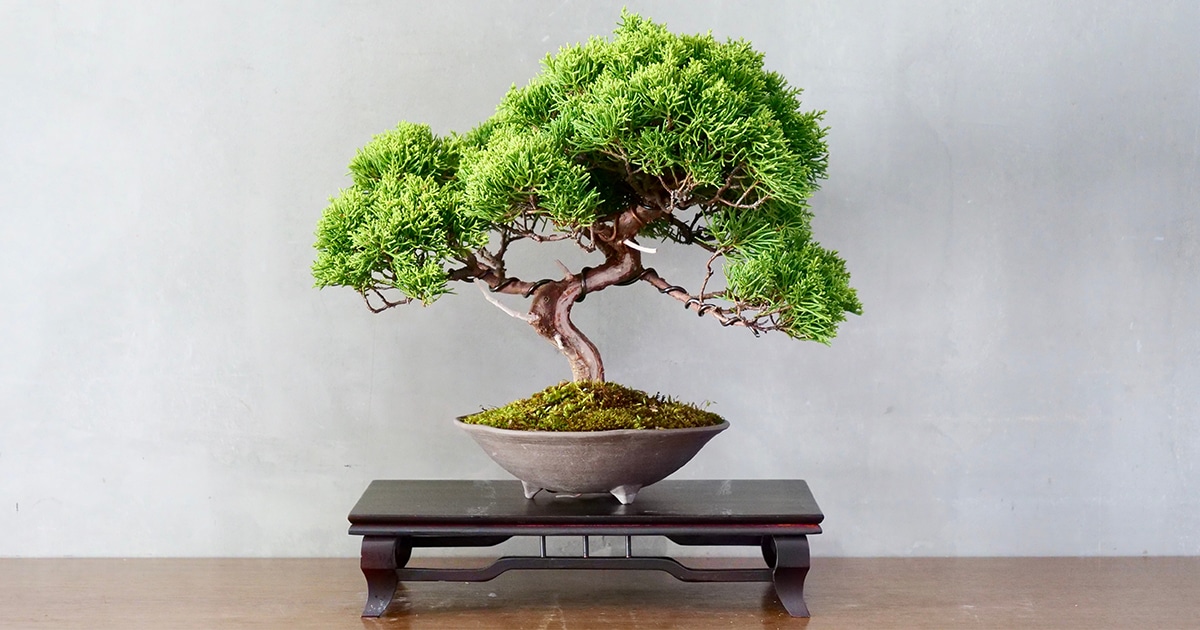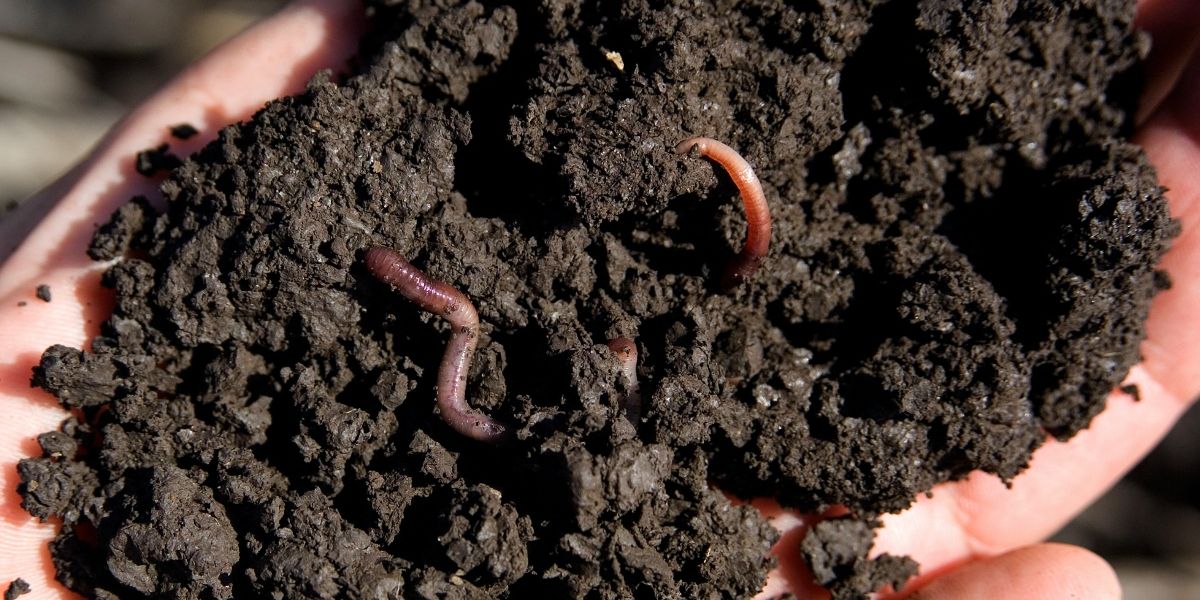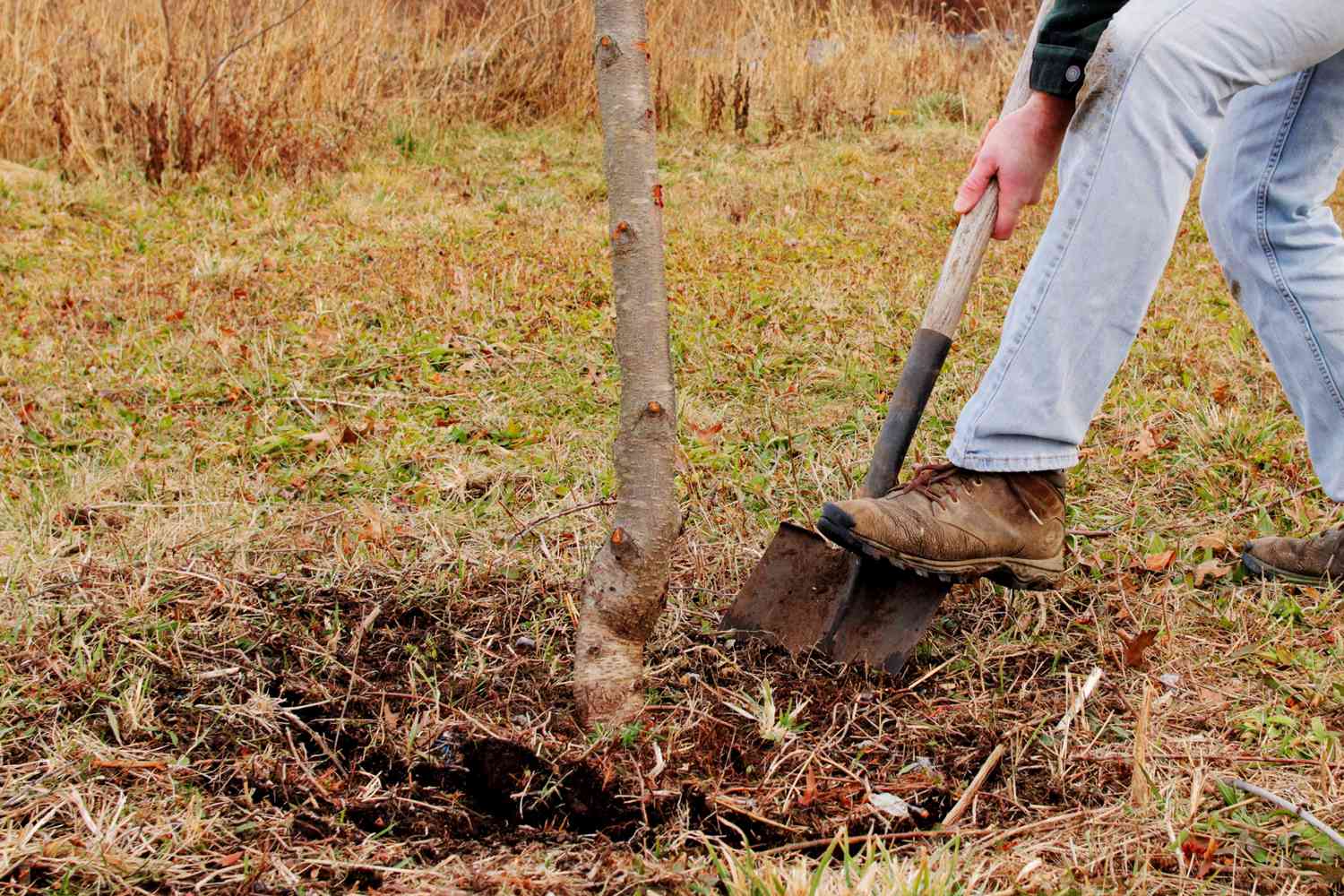Home>Types of Gardening>Ornamental Gardening>How Do Bonsai Trees Stay Small


Ornamental Gardening
How Do Bonsai Trees Stay Small
Modified: January 22, 2024
Discover the secret of keeping bonsai trees small in ornamental gardening. Learn how to maintain the perfect miniature trees with expert tips and techniques.
(Many of the links in this article redirect to a specific reviewed product. Your purchase of these products through affiliate links helps to generate commission for Chicagolandgardening.com, at no extra cost. Learn more)
Table of Contents
Introduction:
Welcome to the world of ornamental gardening, where the art of cultivating bonsai trees takes center stage. Bonsai, which translates to “tray planting,” is a centuries-old horticultural practice that originated in East Asia. These miniature trees may be small in size, but they hold a significant cultural and artistic value.
For many, the allure of bonsai lies in the mystique of how these trees stay small. How can a towering oak or majestic pine be transformed into a tiny version of itself? The answer lies in the careful cultivation and shaping techniques that bonsai enthusiasts employ.
In this article, we will delve into the fascinating world of bonsai trees and explore the methods and principles behind their miniature size. We will uncover the history of bonsai, learn about the guiding principles of bonsai cultivation, explore the techniques used to maintain their small stature, discuss the environmental factors that influence their size, and dispel common misconceptions surrounding bonsai tree size.
Whether you are a seasoned bonsai enthusiast or simply curious about how these captivating trees maintain their miniature form, this article will provide you with a comprehensive understanding of the artistry and skill behind growing bonsai trees.
History of Bonsai Trees:
The history of bonsai trees can be traced back over a thousand years to ancient China. Initially, bonsai was a practice reserved for the elite, symbolizing prestige and wealth. It was later adopted and developed by the Japanese, who brought their own unique style and interpretation to the art form.
In China, bonsai was known as “penzai,” which means tray plantings or landscape trees. It was believed that miniature trees harbored spiritual essence and represented the harmony between humans, nature, and the divine. Bonsai trees were often displayed in religious temples and highly treasured by aristocrats and scholars.
During the Heian period in Japan, monks and scholars brought the art of bonsai across the sea. It was during this time that the term “bonsai” was coined. Japanese artists began incorporating their own aesthetic principles into the art form, emphasizing balance, simplicity, and natural elegance.
By the Edo period, bonsai had become a popular pastime among the samurai class and bourgeoisie. Bonsai gardens and exhibitions became commonplace, and local artisans refined their skills in shaping trees and creating miniature landscapes. Bonsai became more accessible and appreciated by a wider audience.
During the Meiji restoration in the late 19th century, bonsai experienced a resurgence in popularity. It was during this time that bonsai started to incorporate a more naturalistic style, moving away from the highly stylized and symbolic designs seen in earlier periods. The Japanese horticultural society was established, further contributing to the spread and development of bonsai both nationally and internationally.
Today, bonsai trees continue to enchant and inspire people around the world. The art form has evolved and expanded, embracing a wide range of tree species and artistic styles. Bonsai exhibitions and competitions are held globally, showcasing the mastery and creativity of bonsai artists.
The rich history of bonsai trees is a testament to the enduring beauty and cultural significance of this art form. It is a living art that connects us to nature and invites us to appreciate the beauty and tranquility found in the miniature world of bonsai.
Principles of Bonsai Tree Cultivation:
Bonsai cultivation is guided by a set of principles that emphasize the artistry and harmony between the tree and its container. These principles not only shape the physical appearance of the bonsai tree but also influence its overall health and longevity.
The first principle is miniaturization. Bonsai trees are intended to mimic the size and proportions of full-sized trees but in a smaller, more manageable form. Through careful pruning and trimming, branches and leaves are reduced in size to create the illusion of a fully grown tree in miniature.
Another essential principle is proportion and balance. Bonsai trees should exhibit a harmonious balance between the trunk, branches, leaves, and container. The trunk should be thick and taper gracefully towards the apex, and the branches should radiate outward in a balanced manner.
Next is the principle of asymmetry. Bonsai trees should avoid perfect symmetry, as this often appears artificial and contrived. Instead, they should possess a natural and organic appearance, with branches and foliage arranged in a visually pleasing but irregular manner.
The principle of simplicity is also crucial in bonsai cultivation. Minimalism is often favored over excessive ornamentation. By removing unnecessary branches, leaves, and buds, the focus is directed towards the essential features of the tree, creating a sense of tranquility and elegance.
Continuity is another guiding principle in bonsai cultivation. Bonsai trees should embody the continuity of life and the passing of seasons. This is achieved by observing the changing colors of the leaves, flowers, and bark throughout the year, as well as the gradual aging and weathering of the tree.
Finally, the principle of harmony between the tree and its container is essential. The choice of pot, its size, shape, and color should complement the tree and enhance its visual impact. The container should provide a stable and suitable environment for the roots to thrive.
Understanding and implementing these principles is key to successful bonsai cultivation. It requires patience, skill, and a deep appreciation for the artistry and craftsmanship involved. By following these principles, bonsai enthusiasts can create stunning miniature landscapes that capture the beauty and essence of nature.
Techniques for Maintaining Size:
Maintaining the desired size of a bonsai tree requires a combination of precise techniques and ongoing care. Here are some of the key methods used by bonsai growers to ensure the trees stay small and compact:
- Regular Pruning: Pruning is one of the most crucial techniques in bonsai cultivation. By selectively removing branches, shoots, and foliage, the tree’s growth is controlled. Pruning helps to maintain the desired shape, size, and proportions of the bonsai tree. It also encourages the development of finer, dense foliage, enhancing the illusion of miniaturization.
- Wiring: Wiring is another technique used to shape and control the growth of a bonsai tree. By gently wrapping wire around branches and carefully bending them, bonsai enthusiasts can guide the branches into the desired position. Wiring allows for artistic manipulation, creating the characteristic curves and angles found in bonsai trees. However, it’s essential to use caution and avoid causing damage to the tree’s delicate bark.
- Root Pruning: Regular root pruning is necessary to maintain the size and health of a bonsai tree. During root pruning, a portion of the roots is carefully trimmed and pruned to prevent them from becoming too extensive. Root pruning helps to regulate the tree’s uptake of water and nutrients and promotes the development of a compact root system that can fit within the limited space of the bonsai pot.
- Watering and Fertilizing: Proper watering and fertilizing are essential for the healthy growth and size control of bonsai trees. Regular watering ensures that the tree receives adequate moisture without being overwatered, as excess water can promote excessive growth. Fertilizing provides the necessary nutrients for the tree’s growth while avoiding excessive or imbalanced fertilization that could lead to rapid growth.
- Container Selection: The choice of container plays a vital role in maintaining the size of a bonsai tree. Small and shallow containers restrict the growth of the roots, limiting the overall size of the tree. Additionally, containers with good drainage help prevent waterlogged soil, which can spur unwanted growth.
By skillfully employing these techniques and maintaining regular care, bonsai growers can successfully keep their trees small while creating stunning miniature works of natural art.
Environmental Factors Affecting Bonsai Tree Size:
While cultivation techniques play a significant role in maintaining the size of bonsai trees, several environmental factors also contribute to their growth and overall stature. Understanding these factors is essential for successfully managing the size of a bonsai tree.
- Light: Light is crucial for photosynthesis, the process by which trees convert light into energy. Bonsai trees require an appropriate amount of sunlight to thrive, but too much or too little can affect their size. Insufficient light can result in weak growth and elongation, while excessive light can lead to stunted growth. Properly positioning a bonsai tree to receive the right amount of sunlight is essential.
- Temperature: Bonsai trees have specific temperature requirements to maintain their health and size. Different tree species have different temperature preferences, and understanding these requirements is vital. Extreme temperature fluctuations can negatively affect growth and development. Some species may require a dormant period during winter, during which growth slows down or stops altogether.
- Humidity: Humidity levels impact the growth and size of bonsai trees. The optimal humidity range varies depending on the tree species. Low humidity can lead to leaf desiccation, while high humidity can create an environment conducive to fungal growth and other diseases. Properly managing humidity through methods such as misting or using humidity trays can help maintain the health and size of a bonsai tree.
- Air Circulation: Good air circulation is essential for the health and development of bonsai trees. Adequate airflow helps prevent the buildup of moisture and minimizes the risk of fungal diseases. It also aids in the exchange of gases necessary for photosynthesis.
- Water Quality: The quality of water used for watering bonsai trees can impact their growth and overall size. Water with high mineral content or chemicals can have detrimental effects on the tree’s health and limit its growth potential. It is recommended to use filtered or distilled water to ensure proper hydration and nutrient uptake.
By understanding and managing these environmental factors, bonsai growers can create the ideal conditions for their trees to thrive and maintain the desired size. Regular monitoring and adjustments to these factors are essential to ensure the long-term health and beauty of bonsai trees.
Common Misconceptions about Bonsai Tree Size:
Bonsai trees have captivated the imagination of people worldwide, but there are several common misconceptions surrounding their size. Let’s uncover and debunk these misconceptions to gain a better understanding of the true nature of bonsai tree size.
- Bonsai Trees are Genetically Dwarfed: One prevalent misconception is that bonsai trees are genetically dwarfed or grown from miniature tree species. In reality, bonsai trees are regular trees that are carefully cultivated and pruned to maintain their small size. While there are some naturally dwarfed tree species, the majority of bonsai trees come from full-sized tree species.
- They Stay Small Forever: Contrary to popular belief, bonsai trees do not stay the same size forever. With proper care and an appropriate environment, bonsai trees will continue to grow and develop. However, their growth is controlled and managed through pruning and other techniques to maintain their desired size and proportions.
- Bonsai Trees are Stunted or Unhealthy: Another misconception is that bonsai trees are stunted or unhealthy due to their small size. On the contrary, bonsai trees can be exceptionally healthy and have a long lifespan when properly cared for. The small size of bonsai trees is a result of meticulous cultivation and the artful shaping techniques employed by bonsai enthusiasts.
- Bonsai Trees are Indoor Plants: While it is possible to grow certain types of bonsai trees indoors, that doesn’t mean they are exclusively indoor plants. Many bonsai species thrive outdoors and require natural sunlight, fresh air, and the changing of seasons to maintain their vitality and size. Indoor cultivation requires careful consideration of lighting, temperature, and humidity to mimic outdoor conditions adequately.
- They Can be Kept in Small Containers Indefinitely: Bonsai trees may be grown in small containers, but they require periodic repotting to ensure their health and long-term growth. As the tree’s roots grow, they eventually outgrow their current container, hindering further development. Repotting allows for root pruning and fresh soil, providing the tree with the necessary space and nutrients to continue growing.
Understanding these common misconceptions helps to dispel myths surrounding bonsai tree size and promotes a more accurate appreciation for the art and science of bonsai cultivation. Bonsai trees require careful care, skillful techniques, and an understanding of their unique needs to maintain their beauty and miniature form.
Conclusion:
The art of bonsai cultivation is a testament to the human connection with nature and the beauty that can be created in miniature form. Bonsai trees are not genetically dwarfed, but rather meticulously shaped and maintained through pruning, wiring, and other techniques. These techniques, combined with proper care and attention to environmental factors, play a crucial role in maintaining the size of bonsai trees.
Understanding the history and principles behind bonsai cultivation provides insight into the artistry and dedication required to create these captivating miniature landscapes. The careful balance of proportion, asymmetry, simplicity, and harmony with the container contributes to the artful expression of bonsai trees.
It is important to dispel common misconceptions surrounding bonsai tree size. Bonsai trees are not stunted or unhealthy, and they do require ongoing care and appropriate environmental conditions for their continued growth and well-being.
Whether you are a seasoned bonsai enthusiast or someone curious about the world of ornamental gardening, exploring the diverse range of bonsai tree species and mastering the techniques of cultivation can be a rewarding journey. The art of bonsai invites us to appreciate the beauty and complexity of nature on a small scale, fostering a sense of tranquility and connection to the natural world.
So, next time you admire a bonsai tree, take a moment to recognize the skill, passion, and dedication that goes into its creation. Through the careful application of cultivation techniques and an understanding of environmental factors, these miniature trees continue to captivate our hearts and inspire generations to come.




